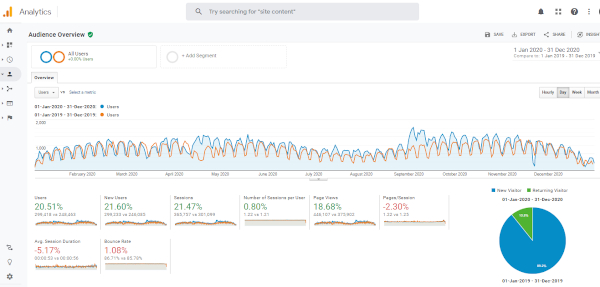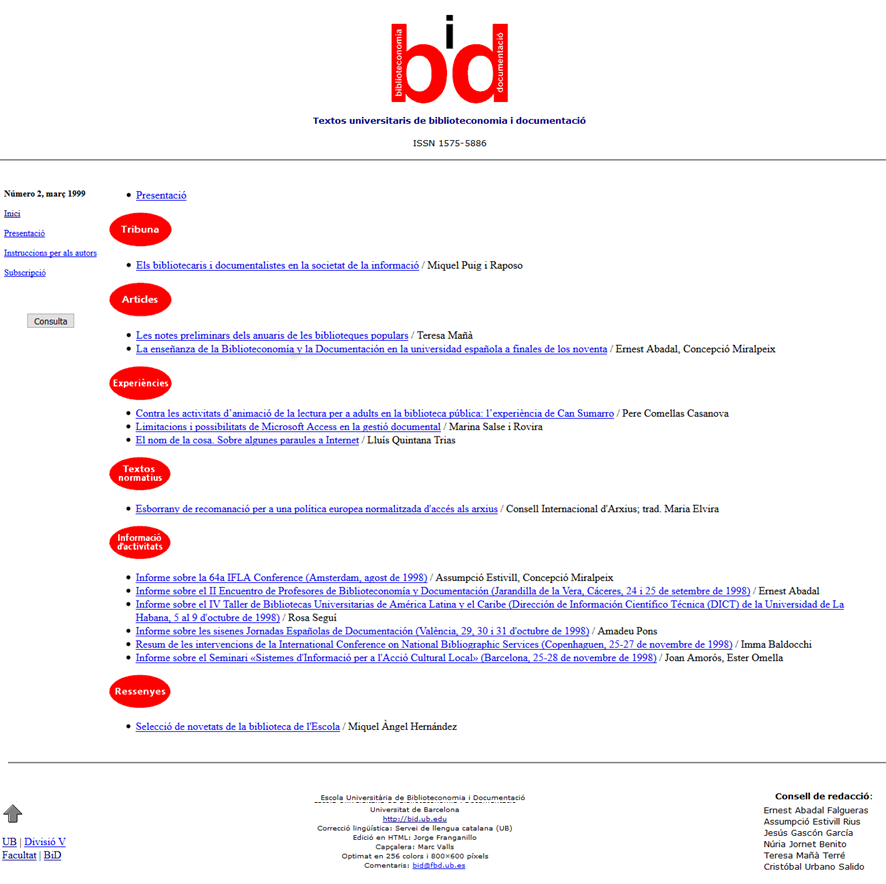This article describes the historical evolution of the journal BiD through an analysis of three key stages: foundation (1998–2003), consolidation (2004–2012) and growth (2013 to the present). It examines aspects related to the editorial structure, sections, layout and inclusion in databases during each of these stages. Secondly, it analyses the present status of the 19 information science journals currently active in Spain based on four general characteristics (longevity, editor profile, inclusion in databases and open-access publication), and then compares these aspects to the situation 20 years ago through an assessment of three studies carried out at that time. Finally, it examines the evolution of the journal BiD and outlines its future challenges.


